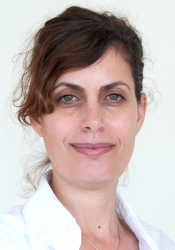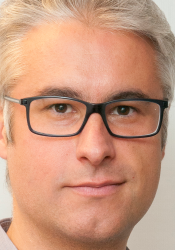Human Tumor Atlas Pilot Project (HTAPP)



View the HTAPP Webinar Series
Overview
To diagnose, study, monitor, and treat human cancer, there is an enormous need to define and characterize the cells that comprise tumors, chart their spatial organization, and decipher their functional connections. The generation of tumor atlases poses substantial challenges, including development and dissemination of robust SOPs for tissue collection, development of experimental design strategies, establishment of strategies to integrate across cellular and spatial data, and development of effective data sharing approaches.
To address these challenges and lay a foundation for HTAN, HTAPP was initiated in partnership with the National Cancer Institute (NCI) and the Frederick National Laboratory for Cancer Research (FNLCR). HTAPP aims to: (1) gain an understanding of the number of cells, tumors, and spatial methods required to describe tumor heterogeneity; (2) develop, validate, and transfer knowledge of SOPs for tissue procurement, sampling parameters, and data generation and analysis from seven tumor types; (3) generate pilot-scale, spatially resolved tumor atlases of metastatic breast cancer and pediatric neuroblastoma; (4) provide data and resources generated to the HTAN and broader community; and (5) assess the feasibility of applying single-cell genomics to FFPE tissues. Our team is composed of clinical, single-cell genomics, spatial genomics and proteomics, and computation experts, who have pioneered the development and application of these approaches to tumors.
Principal Investigators
Aviv Regev, PhD
 Dr. Aviv Regev’s research centers on understanding how complex molecular circuits function in cells and between cells in tissues. She is a professor in the Department of Biology at MIT, Chair of the Faculty and founding director of the Klarman Cell Observatory and Cell Circuits Program at the Broad Institute of MIT and Harvard, where she is a core member, and an Investigator at the Howard Hughes Medical Institute. Her lab has been a single-cell genomics pioneer – inventing key experimental methods and computational algorithms in the field, demonstrating their application, and inferring the molecular and cellular circuits that control cellular and tissue function in health and disease. She is Founding Co-Chair of the international initiative to build a Human Cell Atlas (HCA), whose mission is to create comprehensive reference maps of all human cells – the fundamental units of life – as a basis for understanding human health and diagnosing, monitoring, and treating disease.
Dr. Aviv Regev’s research centers on understanding how complex molecular circuits function in cells and between cells in tissues. She is a professor in the Department of Biology at MIT, Chair of the Faculty and founding director of the Klarman Cell Observatory and Cell Circuits Program at the Broad Institute of MIT and Harvard, where she is a core member, and an Investigator at the Howard Hughes Medical Institute. Her lab has been a single-cell genomics pioneer – inventing key experimental methods and computational algorithms in the field, demonstrating their application, and inferring the molecular and cellular circuits that control cellular and tissue function in health and disease. She is Founding Co-Chair of the international initiative to build a Human Cell Atlas (HCA), whose mission is to create comprehensive reference maps of all human cells – the fundamental units of life – as a basis for understanding human health and diagnosing, monitoring, and treating disease.
Orit Rozenblatt-Rosen, PhD
 Dr. Orit Rozenblatt-Rosen is Scientific Director of the Klarman Cell Observatory at the Broad Institute of MIT and Harvard and the lead scientist at the Broad for the international Human Cell Atlas Initiative. Dr. Rozenblatt-Rosen has a background in cancer research, epigenetics, systems biology, genomics, and single-cell genomics. She helped develop and implement systematic pipelines for genomic profiling and analysis of single cells from freshly dissected tumors. Previously, Dr. Rozenblatt-Rosen was a research scientist at the Dana-Farber Cancer Institute. She led a team that performed systematic analyses of host network perturbations induced by DNA tumor viruses to help interpret cancer genomes. As a postdoctoral fellow at the Dana-Farber Cancer Institute, she focused on understanding the links between tumor suppression and epigenetic mechanisms. Dr. Rozenblatt-Rosen earned a B.S. in Biology from Tel Aviv University and a Ph.D. from the Weizmann Institute of Science.
Dr. Orit Rozenblatt-Rosen is Scientific Director of the Klarman Cell Observatory at the Broad Institute of MIT and Harvard and the lead scientist at the Broad for the international Human Cell Atlas Initiative. Dr. Rozenblatt-Rosen has a background in cancer research, epigenetics, systems biology, genomics, and single-cell genomics. She helped develop and implement systematic pipelines for genomic profiling and analysis of single cells from freshly dissected tumors. Previously, Dr. Rozenblatt-Rosen was a research scientist at the Dana-Farber Cancer Institute. She led a team that performed systematic analyses of host network perturbations induced by DNA tumor viruses to help interpret cancer genomes. As a postdoctoral fellow at the Dana-Farber Cancer Institute, she focused on understanding the links between tumor suppression and epigenetic mechanisms. Dr. Rozenblatt-Rosen earned a B.S. in Biology from Tel Aviv University and a Ph.D. from the Weizmann Institute of Science.
Bruce Johnson, MD
 Dr. Bruce Johnson is the Chief Clinical Research Officer at the Dana-Farber Cancer Institute and has organized and run clinical trials for more than 30 years. His translational research is devoted to testing novel therapeutic agents for their efficacy against lung cancer and other malignancies with specific genomic changes and the effects of the tumor microenvironment on efficacy of immunotherapy. Dr. Johnson was one of the scientists who discovered the association between epidermal growth factor receptor mutations and response to epidermal growth factor receptor-tyrosine kinase inhibitors. As the Director of the Center for Precision Medicine at the Dana-Farber Cancer Institute, he oversees the characterization of tumor specimens from patients both before and after therapy with chemotherapeutic agents, targeted agents, and immunotherapy. Dr. Johnson is a Professor of Medicine at Harvard Medical School, an Institute Physician at the Dana-Farber and Brigham and Women’s Hospital, and Past President of the American Society of Clinical Oncology.
Dr. Bruce Johnson is the Chief Clinical Research Officer at the Dana-Farber Cancer Institute and has organized and run clinical trials for more than 30 years. His translational research is devoted to testing novel therapeutic agents for their efficacy against lung cancer and other malignancies with specific genomic changes and the effects of the tumor microenvironment on efficacy of immunotherapy. Dr. Johnson was one of the scientists who discovered the association between epidermal growth factor receptor mutations and response to epidermal growth factor receptor-tyrosine kinase inhibitors. As the Director of the Center for Precision Medicine at the Dana-Farber Cancer Institute, he oversees the characterization of tumor specimens from patients both before and after therapy with chemotherapeutic agents, targeted agents, and immunotherapy. Dr. Johnson is a Professor of Medicine at Harvard Medical School, an Institute Physician at the Dana-Farber and Brigham and Women’s Hospital, and Past President of the American Society of Clinical Oncology.
Mario Suvà, MD, PhD
 Dr. Mario Suvà is a physician-scientist in the Department of Pathology at Massachusetts General Hospital (MGH) and an institute member at the Broad Institute. Dr. Suvà’s expertise is in clinical neuropathology, single-cell sequencing technology, and cancer research. Dr. Suvà co-directed landmark studies characterizing glioblastoma, oligodendroglioma, astrocytoma, and pediatric gliomas with single-cell genomic technologies, shedding light on tumor heterogeneity, tumor classification, glioma cell lineages, cancer stem cell programs, tumor evolution, and the composition of the tumor microenvironment. His laboratory focuses on dissecting the heterogeneity of patient tumors and relating transcriptional and genetic programs of individual cancer cells. Dr. Suvà earned his M.D. and Ph.D. from the University of Lausanne, Switzerland. His doctoral research identified cancer stem cells in Ewing sarcoma and highlighted mechanisms underlying their emergence. He conducted postdoctoral research at MGH and the Broad Institute, applying chromatin analysis and functional approaches to identify master regulators of glioma stem cell programs.
Dr. Mario Suvà is a physician-scientist in the Department of Pathology at Massachusetts General Hospital (MGH) and an institute member at the Broad Institute. Dr. Suvà’s expertise is in clinical neuropathology, single-cell sequencing technology, and cancer research. Dr. Suvà co-directed landmark studies characterizing glioblastoma, oligodendroglioma, astrocytoma, and pediatric gliomas with single-cell genomic technologies, shedding light on tumor heterogeneity, tumor classification, glioma cell lineages, cancer stem cell programs, tumor evolution, and the composition of the tumor microenvironment. His laboratory focuses on dissecting the heterogeneity of patient tumors and relating transcriptional and genetic programs of individual cancer cells. Dr. Suvà earned his M.D. and Ph.D. from the University of Lausanne, Switzerland. His doctoral research identified cancer stem cells in Ewing sarcoma and highlighted mechanisms underlying their emergence. He conducted postdoctoral research at MGH and the Broad Institute, applying chromatin analysis and functional approaches to identify master regulators of glioma stem cell programs.